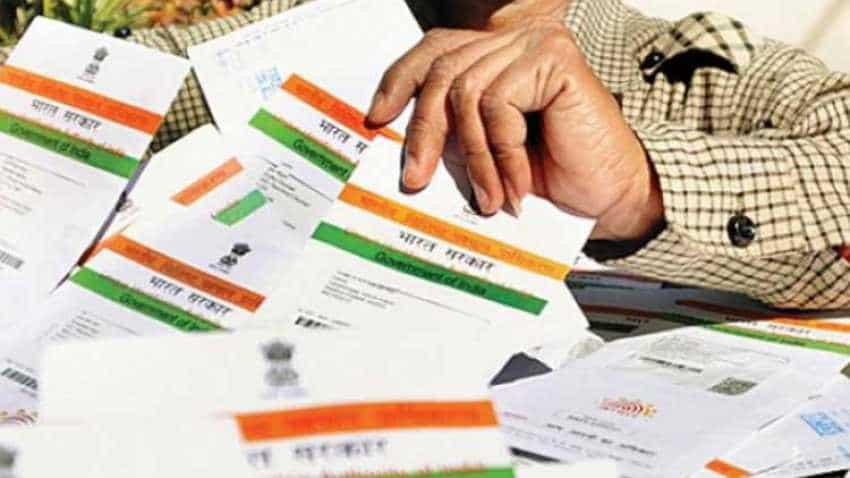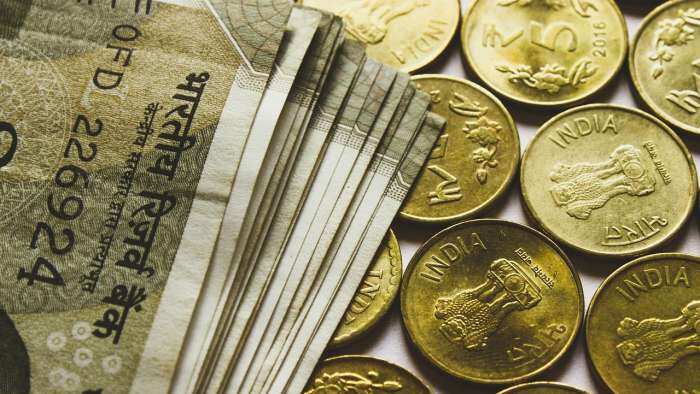UIDAI asks banks to use Aadhaar eKYC for DBT users; voluntary offline Aadhaar for other customers
The UIDAI has clarified to banks that Aadhaar eKYC can be used to authenticate beneficiaries of government subsidies and welfare schemes while for other customers physical Aadhaar card can be used for verification, a source said.

The UIDAI has clarified to banks that Aadhaar eKYC can be used to authenticate beneficiaries of government subsidies and welfare schemes while for other customers physical Aadhaar card can be used for verification, a source said.
The Aadhaar-issuing authority Unique Identification Authority of India (UIDAI) wrote to the banks last week clarifying the instances and modes in which Aadhaar can be used, and a copy of the same was also sent to the Reserve Bank of India, a senior UIDAI official told PTI. The UIDAI wrote to banks after it received legal opinion on the matter, in the wake of a recent Supreme Court verdict that restricted the use of Aadhaar by private entities but cleared it for welfare schemes.
The UIDAI informed the banks that they can use Aadhaar authentication for beneficieries of government subsidies and welfare schemes, and listed various 'options' for the use of Aadhaar (such as Quick Response or QR code and offline Aadhaar) for other banking customers in the light of Supreme Court judgement in the Aadhaar case, said the official who did not wish to be named. Physical Aadhaar card can be used for verification in an offline mode if produced voluntarily, it clarified.
Watch This Zee Business Video Here:
When contacted UIDAI CEO, Ajay Bhushan Pandey told PTI, "There are viable and completely paperless and digital options available through digitally signed electronic form of Aadhaar which allows identity to be verified online without pinging our server. And through such methods the services can be seamlessly and digitally offered by banks for non-DBT customers". He also confirmed that UIDAI's views have been sent to banks but did not elaborate on details.
UIDAI has said that banks will be entitled to seek authentication of the beneficiaries availing subsidies, benefits, services under Aadhaar Act, for transfer of any subsidy or benefit to the bank account of the beneficiary, as well as for facilitating the withdrawal of money through Aadhaar based micro-ATM machines.
This means Aadhaar enabled Payment System (AePS) and BHIMAadhaar Pay shall remain operative and bank can continue to maintain and provide these facilities so that Direct Benefit Transfer or DBT beneficiaries can withdraw their money through the micro-ATMs, AePS, BHIM Aadhaar Pay.
In its circular to banks, the UIDAI said that for customers giving declaration that they want to receive entitled benefits or subsidies of welfare schemes funded from the Consolidated Fund of India in their account directly, banks can perform Aadhaar-based authentication using e-KYC for opening bank accounts too.
For all other customers, banks cannot use Aadhaar electronic know your customer (e-KYC) authentication for opening bank accounts. They are, however, not barred from accepting physical Aadhaar card or offline electronic Aadhaar, if offered voluntarily by an individual for opening bank accounts and verifying the authenticity through Quick Response code and others means, the official said.
While these offline modes will be considered Officially Valid Documents (OVD) for KYC purpose in such cases, the banks will be required to mask the first eight digits of the Aadhaar number while storing the physical copy of the Aadhaar card or e-Aadhaar, as per norms, the UIDAI has said.
The UIDAI circular said that for convenience of non-DBT beneficiary clients and to avoid paper-based manual process, banks can develop a web or mobile application which can leverage QR code printed on physical Aadhaar, or other Aadhaar modes containing UIDAI's digitally signed KYC information to open bank accounts, provided these are produced by Aadhaar holder on a voluntary basis.
Doing so would make account opening process paperless and hassle-free even for non?DBT customers whose accounts cannot be supported by online Aadhaar authentication as per the recent SC order.
The UIDAI has said that since banks will be using Aadhaar e-KYC for opening bank accounts and withdrawal of money through AePS by DBT beneficiaries, it will be mandatory for the banks to provide Aadhaar enrolment facilities. So the earlier notification requiring every Scheduled Commercial Bank to provide Aadhaar enrolment and update facilities to its customers, will continue to operate.
Get Latest Business News, Stock Market Updates and Videos; Check your tax outgo through Income Tax Calculator and save money through our Personal Finance coverage. Check Business Breaking News Live on Zee Business Twitter and Facebook. Subscribe on YouTube.
RECOMMENDED STORIES

SIP+SWP: Rs 10,000 monthly SIP for 20 years, Rs 25 lakh lump sum investment, then Rs 2.15 lakh monthly income for 25 years; see expert calculations

SBI Senior Citizen Latest FD Rates: What senior citizens can get on Rs 7 lakh, Rs 14 lakh, and Rs 21 lakh investments in Amrit Vrishti, 1-, 3-, and 5-year fixed deposits

Power of Compounding: How soon will monthly SIP of Rs 6,000, Rs 8,000, and Rs 10,000 reach Rs 5 crore corpus target?

EPFO Pension Schemes: Early pension, retirement pension, nominee pension and 4 other pension schemes that every private sector employee should know

SIP vs PPF: How much corpus you can build in 15 years by investing Rs 1.5 lakh per year? Understand through calculations
05:26 PM IST








 Aadhaar Card- Did you know these benefits of mAadhaar? Here is how to download it for convenience at airports, railways stations
Aadhaar Card- Did you know these benefits of mAadhaar? Here is how to download it for convenience at airports, railways stations  Aadhaar card download: Simple tips to do it from uidai.gov.in
Aadhaar card download: Simple tips to do it from uidai.gov.in Aadhaar card download: Know how to do it from uidai.gov.in; here are simple tips
Aadhaar card download: Know how to do it from uidai.gov.in; here are simple tips Eaadhaar.uidai.gov.in download: Is Aadhaar or e-Aadhhar a valid proof of identity? Know your rights
Eaadhaar.uidai.gov.in download: Is Aadhaar or e-Aadhhar a valid proof of identity? Know your rights Aadhaar data breach report incorrect: HC told
Aadhaar data breach report incorrect: HC told